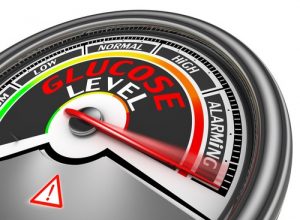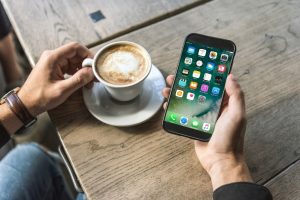What Is The Truth About Personalized Nutrition Testing? – Part 1
Author: Dr. Stephen Chaney
 Personalized nutrition testing is all the rage. Should you limit carbs or should you limit fats? Should you avoid sugar? Should you eat more protein or less protein? What supplements should you take?
Personalized nutrition testing is all the rage. Should you limit carbs or should you limit fats? Should you avoid sugar? Should you eat more protein or less protein? What supplements should you take?
Companies promise you that their version of personalized nutrition testing will tell you all that and more. Are they being truthful or are their claims false? Are the personalized nutrition tests they offer valuable or are they a waste of money?
In particular, recent headlines have proclaimed that a new personalized testing system can help you do a better job of controlling your blood sugar levels. Is this claim true?
Let me answer that question in 3 steps:
- First, I will discuss why that kind of test could be valuable and describe how the study was done.
- Next, I will evaluate the strengths and weaknesses of the study.
- Finally, I will discuss why personalized nutrition testing is so difficult. I will also give you guidance on how you can gain better control of your blood sugar fluctuations without expensive tests.
Why Is Predicting How To Control Blood Sugar Important?
 Why is it important to devise a personalized nutrition test to measure an individual’s blood sugar response to various foods? The answers to this are twofold:
Why is it important to devise a personalized nutrition test to measure an individual’s blood sugar response to various foods? The answers to this are twofold:
- The combination of the obesity epidemic and the American diet have created the perfect storm. Millions of Americans have high blood sugar levels. Elevated blood sugar levels are associated with heart disease, diabetes, cancer, inflammatory diseases and much more. This is a public health crisis.
- Keeping track of carbohydrates in the foods you eat is not a particularly effective way to control your blood sugar levels. This approach is based on average responses, and none of us are average. I have discussed individual variation in blood sugar responses to common foods in a previous issue of “Health Tips From The Professor.”
How Was The Study Done?
 The study (H Mendes-Soares et al, American Journal of Clinical Nutrition, 110: 63-75, 2019) enrolled 327 participants, primarily from two counties in Minnesota. The characteristics of the participants was as follows:
The study (H Mendes-Soares et al, American Journal of Clinical Nutrition, 110: 63-75, 2019) enrolled 327 participants, primarily from two counties in Minnesota. The characteristics of the participants was as follows:
- 77% female.
- Average age 45.
- 64% overweight and 27% obese which, unfortunately, is average for the American population.
- HbA1c (a measure of long-term blood glucose control) averaged 5.2, with 8.4% of the population having elevated HbA1c (indicative of chronic high blood sugar levels and consistent with pre-diabetes).
The study lasted one week and was rigorously controlled.
- The subjects provided a stool sample 2 days prior to the study. The stool sample was used to characterize the populations of gut bacteria (microbiome) for every subject.
- Prior to the study, the subjects were also asked to fill out a questionnaire asking about their health, lifestyle, activities, and diet preferences. Height, weight, blood pressure, and HbA1c levels were also measured.
- Subjects were given phone apps to record their food (meal content, duration, and time) and activity (intensity, duration, and time) throughout the week. They were also asked to record medications and sleep.
- Subjects were outfitted with a glucose monitor that measured blood glucose levels continuously throughout the week. The subjects were also instructed to use a manual blood glucose monitor 4 times a day. This served as a check on the accuracy of the continuous blood glucose monitor.
- On 4 days the subjects were given a standardized breakfast consisting of a bagel with cream cheese. This allowed estimation of variation in blood sugar response between subjects and day to day variations in blood sugar response for individual subjects.
- Finally, the subjects were told to maintain their normal eating habits with no significant deviations during the week.
All this information was used to develop a personalized model to predict the blood sugar response of each subject to various foods. However, this was no ordinary model. It was not just using the subject’s genome or microbiome to predict their blood sugar response to foods. The model included:
- Microbiome: Population of gut bacteria. This information came from the stool test.
- Meal information: carbohydrate, fat, protein, sugar, fiber, calories, sodium, alcohol, & water. This information came from the food app on their phones that the subjects used to log everything they ate for a week.
- Meal context: Time of day, total carbohydrate consumed over past 3 hours and 6 hours, total calories consumed over past 2 hours, 3 hours, and 6 hours, total fiber consumed over past 12 hours. This information also came from their food app.
- HbA1c: A measure of long-term blood sugar control. This was measured at the beginning of the study.
- Personal information: Physical activity duration and frequency, sleep quality, stress, and hunger levels throughout the day. This information came from their exercise phone app. BMI (a measure of obesity), age, gender, and regularity of defecation. This came from the questionnaire they filled out when they entered the study.
- Continuous blood sugar responses before, during, and after each meal. This came from the glucose monitor the subjects wore for a week.
I went into detail in describing the modeling approach so you can understand how comprehensive the model was. This in not just some personalized testing protocol where you can just send off a stool sample for microbiome testing, a cheek swab for DNA testing, and/or fill out a diet and lifestyle questionnaire. This is the kind of personalized testing that could only be done in a medical center and would likely cost well over a thousand dollars.
Can Personalized Tests Help You Gain Better Control Of Your Blood Sugar?
Here are the key findings from the study.
 The accuracy of this model for predicting the blood sugar response of individual subjects was around 60% compared to around 40% when the investigators just took into consideration the carbohydrate content of the meals.
The accuracy of this model for predicting the blood sugar response of individual subjects was around 60% compared to around 40% when the investigators just took into consideration the carbohydrate content of the meals.- Every component of the model contributed to the accuracy of predicting individual blood glucose response.
These findings led the authors to conclude that their model “…is a promising means for designing effective nutritional interventions to control glycemic [blood sugar] responses to foods.” This conclusion is what generated the headlines you may have seen.
What Are The Weaknesses Of The Study?
 In many ways this was a very well-designed study, but it had two major weaknesses.
In many ways this was a very well-designed study, but it had two major weaknesses.
- The day to day reproducibility of blood glucose predictions for the standardized bagel and cream cheese meal was only around 66%. That is disappointing for a very expensive test that can only be performed in a medical center.
- The authors did not calculate the predictive value of glycemic index, which they could have easily done from their data. Since glycemic index is a better predictor of blood sugar response than carbohydrate content, this is a major weakness of the study. One is left wondering if this extensive and expensive test approach is significantly better at predicting blood sugar responses than simply using glycemic index as a predictor.
What Is The Truth About Personalized Nutrition Testing?
Here are the takeaways from this study:
 Restricting carbohydrates is not a particularly effective way to control your blood sugar levels. Unless you completely eliminate carbohydrates, your chances of controlling blood sugar levels are only around 40%. And, if you do eliminate carbohydrates, your diet is deficient in nutrients, phytonutrients, fiber, and friendly gut bacteria. In short, it is a very unhealthy diet.
Restricting carbohydrates is not a particularly effective way to control your blood sugar levels. Unless you completely eliminate carbohydrates, your chances of controlling blood sugar levels are only around 40%. And, if you do eliminate carbohydrates, your diet is deficient in nutrients, phytonutrients, fiber, and friendly gut bacteria. In short, it is a very unhealthy diet.- If the personalized nutrition testing protocol described in this study were commercially available, you could increase your ability to control blood sugar levels to 60%. That is an improvement, but…
- You would need to continuously monitor diet, exercise, and blood sugar levels for a week as part of the testing protocol as described above.
- The test would likely cost thousands of dollars and require that you travel to a major medical center with the capabilities to administer such a program.
- We don’t know whether this testing protocol is significantly better at predicting your blood sugar response to various foods than simply relying on the glycemic index of those foods.
- If you significantly changed your diet and/or lifestyle, this program would likely become worthless at predicting your blood sugar response. That is because the predictive ability of this program depends on the interaction of every component of your diet and lifestyle.
In short, this personalized nutrition program requires a lot of effort and expense for a slight increase in your ability to predict which foods cause your blood sugar levels to increase.
My Recommendations
If you want to keep your blood sugar under control, here are my recommendations:
 Avoid “personalized nutrition tests.” The ones that offer any benefit are expensive and time-consuming. The slight advantage they offer is not worth your time and effort.
Avoid “personalized nutrition tests.” The ones that offer any benefit are expensive and time-consuming. The slight advantage they offer is not worth your time and effort.- Start by eliminating sodas, sugary junk foods, and highly processed foods from your diet. That includes white flour and other refined grains. This one change will make a bigger improvement in your blood sugar control than anything else you can do.
- Don’t eliminate whole food groups in an effort to restrict the carbohydrates in your diet. This is particularly true for fruits, legumes, and whole grains. They provide nutrients, phytonutrients, fiber, and support the growth of healthy gut bacteria that are essential for your good health.
- If you have trouble controlling your blood sugar levels, choose carbohydrate foods with a low glycemic index.
- Think in terms of meals rather than individual foods. A piece of chocolate cake will have much less effect on your blood sugar level when consumed as part of a meal containing protein, fiber, and healthy fats than when consumed as a snack.
- We are all different. Learn to listen to your body. This is more important than personalized nutrition testing or anything else I have mentioned. Pay attention to the foods you eat.
If you consistently experience symptoms of hyperglycemia (high blood sugar) shortly after you eat a particular food, and/or symptoms of hypoglycemia (low blood sugar) a short time later, that food is not your friend.
It doesn’t matter that a personalized nutrition test said you could eat it. It doesn’t matter that the food has a low glycemic index. You should minimize that food in your diet.
- Symptoms of high blood sugar: fatigue, thirst, headache, trouble concentrating, and frequent urination.
- Symptoms of low blood sugar: hunger, shakiness, anxiety, irritability, feeling lightheaded, and sleepiness.
The Bottom Line
A recent study reported that a personalized testing program was 60% accurate in predicting an individual’s blood sugar response to various foods. That was slightly better than the 40% accuracy when the investigators just considered the carbohydrate content of the foods.
However:
- The day to day reproducibility of blood glucose predictions for a standardized meal was only around 66%. That is disappointing for a very expensive test that can only be performed in a medical center.
- The authors did not calculate the predictive value of glycemic index, which they could have easily done from their data. Since glycemic index is a better predictor of blood sugar response than carbohydrate content, this is a major weakness of the study. One is left wondering if this extensive and expensive test approach is significantly better at predicting blood sugar responses than simply using glycemic index as a predictor.
For more details and my personal recommendations on how to best control your blood sugar levels, read the article above.
These statements have not been evaluated by the Food and Drug Administration. This information is not intended to diagnose, treat, cure or prevent any disease.
